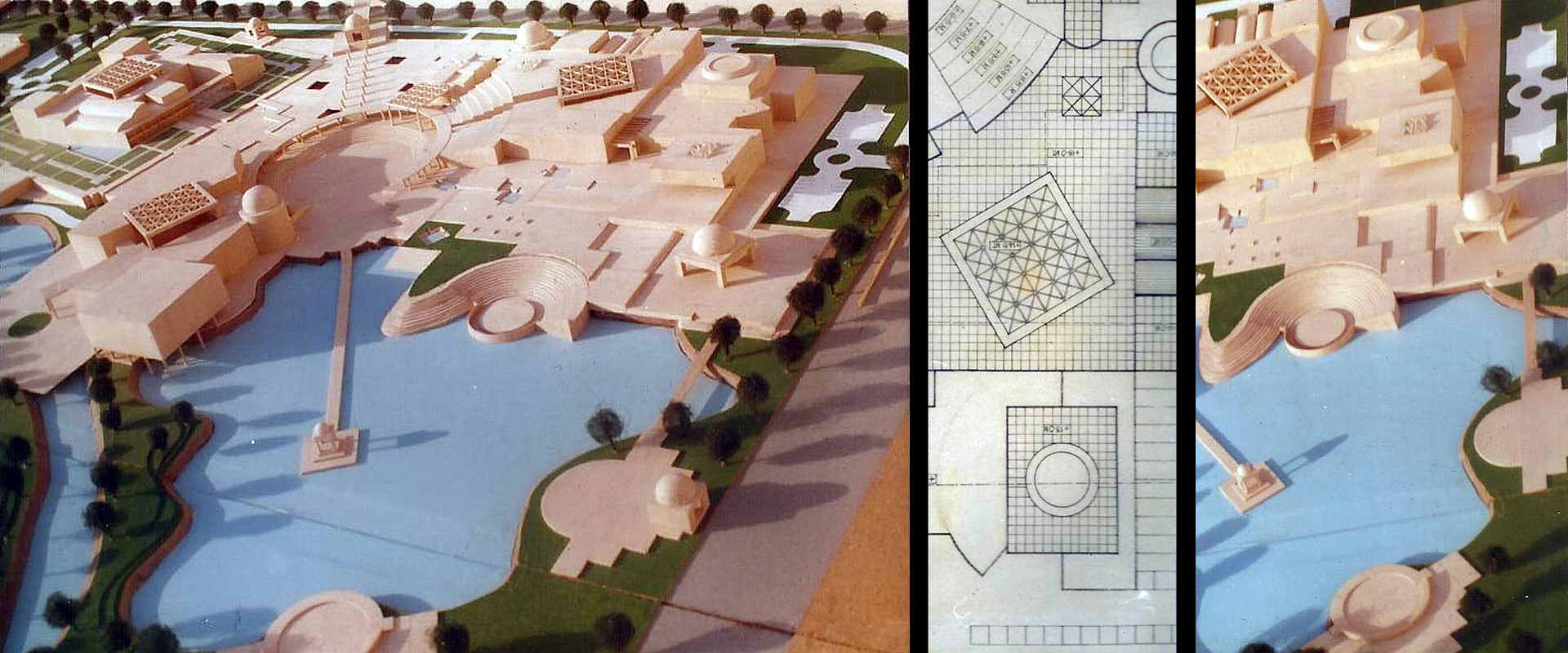

The narrative of this competition design stems from the principle of Indian culture. Due to India’s historical past, Indian culture has undergone several mutations, but yet there are certain chords still running through which hold the weave of India firmly. The Kumbh Mela sited at the confluence of Ganga, Yamuna, and Saraswati – the Triveni Sangam is one such. A parallel has been drawn to this in the design. A cultural centre which houses the three main art streams, the visual written and oral arts have been compared to the three rivers at the confluence. The symbolism drawn is between the Ganga as the performing arts, the Yamuna as the visual arts and the Saraswati as the subdued literary art.

The other symbolic parallel drawn is with the Kumbh Mela. The Kumbh Mela in its cultural sense is a meeting place for millions of Indians and foreigners. On similar lines, the centre is designed as a meeting place of the city. Traditionally a water front has always been a socially active site for interaction. Since this city, the city of Lucknow, does not enjoy the benefit of a vast water front like a sea or major lake, the cultural centre has been worked upon with this view in mind. The site has been treated as a meeting place for communal interaction. This brings the idea of creating an artificial lake within the site which acts as an agent to cool down the micro-climate and is ideally located in the direction such that winds blowing in the hot months will cool down and ventilate the building thus lowering the ambient temperature. Thus the design unfolds itself from the abstract to a concrete and multi-dimensional form traversing several layers of design and programmatic considerations.

The site is treated as the Triveni Sangam and happenings within it as the Kumbh Mela. The course of rivers flowing downwards lends itself into a physical form such that the periphery of the complexes is treated as the highest points after which they gradually taper downwards towards the central meeting arena. The meeting area reflects the dynamism of the Sangam or the mighty confluence.

The access to the complex is basically segregated into two- the vehicular and the pedestrian. The major pedestrian access to the complex is along two major axes culminating in a symbolic memorial structure amidst the lake. This memorial has been considered as the major focal point from which all other minor axes originate. The architecture style of this centre reiterates the expression of this philosophy. And the thematic elements that carry this expression draw inspiration from the cultural history of the state of Uttar Pradesh.

Symposium Complex
The complex houses an auditorium accommodating 1500 persons, two meeting halls of 500 capacities each and 2 halls of 150 capacity each, 4 committee rooms for 50 to 75 persons each. The accommodation for offices, secretarial staff, restaurant, kiosks, and stalls for books, periodicals, curious, paintings, sculptures etc. were also be provided.
Art Galley & U.P. Darshan
This structure houses pictorial exhibits combined with models and statuses depicting the life story of Late Smt. Indira Gandhi and the progress and achievements made during her Prime Minister ship. They also provide accommodation for exhibitions of various other associated themes.
It was proposed to provide special accommodation to exhibit variety of Art, Architecture, and Culture of Uttar Pradesh. This complex will also have educational, research and study facilities.
Library Complex
A library of exceptionally high standard was proposed to be provided in which importance was given to the subjects pertaining to the life, works and her contribution both at national and international level. A music library for records, tapes etc. were also provided.



